
This brings you to the Table of Contents page.
From here you can check out:
- Reading and Materials - The required books to be read plus the list of materials needed for each chapter.
- Student Activity Pages - To download files of all the student pages at once.
- Reading and Question Pages - To download all the Q&A pages for each chapter.
- Summary of Skills - A list of all the skills covered in the unit.
- How to Use Moving Beyond the Page - Contains a "Getting Started" video, along with a full explanation of the Curriculum Structure, Lesson Structure and a Typical Day.
- Review Sheet - A review of what should have been mastered during the study.
You also have direct access to the lessons from here by clicking on the link for the lesson. As a lesson is completed it allows you to mark it as complete which then crosses it out on the Table of Contents. Not to worry though, you still have full access to the lesson until your access expires.
Above you will see links to Spelling and Vocabulary. As we use other sources for our spelling, I did not include this in our learning. I do like the look of their downloadable Spelling Worksheet though, it reminds me of how we learned our spelling words when I went to school. We did learn the vocabulary words though when they appeared in the lessons. We defined the words and I had them put the words in alphabetical order.
The language arts lessons and the science lessons are organized in about the same way. They start out with a "Getting Started" section where they lay out what the student will be learning in the chapter. You'll find:
Questions to Explore (called "Big Ideas" in the science book)
Facts and Definitions
Skills (skills that will be learned)
Materials (list of needed materials for the lesson)
Introduction (how to introduce the chapter to the child)
We then move into the "Activities" section. Most of the lessons start with a Reading and Questions section. With Tornado, that is where we answered questions about the chapter, with the Amazing Weather lessons it is where we answered questions about what was read in the Weather book. The remainder of the activities in each lesson were either hands on or filling out the student sheets and composition activities.
We worked on both Tornado and Amazing Weather concurrently, alternating days. A lesson would be 1 or 2 days long, though we tended to extend the lessons a little longer as the girls needed an extra day to hear the chapter before doing their summaries and answering the questions. Even with the Weather book, we needed some extra time because the reading assignments were long at times. Additionally, as the girls are on the younger end of the age range, I would give them extra time to write their answers. Though there were times I would write for the girls as they dictated. Sometimes I had them rewrite them, other times I didn't as I could tell they were a getting overwhelmed from the writing.
Here are several of the activities the girls have done.
Drawing a tornado and writing down facts that we will glue on the back.
Writing what they would like to do on a farm.
Discovering where and what Tornado Alley is.
There were lots of opportunities for a gentle introduction to language arts. We worked on such things as vocabulary definitions, alphabetical order, main idea, choosing words, punctuation, and synonyms.
They needed to match the word to the definition on the activity sheet I printed out and then I printed out the words and had them alphabetize them.
After reading the first chapter, one of the activities was this Main Idea sheet. There were two multiple choice answers and 2 come-up-with-your-own main idea sections. This was all in preparation of writing summaries for each chapter.
Another one of my favorite activities was the Choosing Words sheet. We looked at how the author used descriptive words to tell the story so it would be more exciting. Then the children had to rewrite the selection in their own words. I think I liked this activity more than the girls did. I definitely want to do more activities like this because this is an important skill for them to have.
They also worked on punctuation. They both did the activity where they had to add the right punctuation.
However, I only had Tabitha do the second activity where she had to come up with two of her own sentences for each type of sentence.
We even did some research on turtles and Tabitha worked on writing her own myth about how the turtle got its shell.
First we completed the Story Map Graphic Organizer.
Then she used a different one to create her own myth.
I am really in love with these organizer pages. I have to share another one. This is the Hamburger Paragraph Organizer, which Tabitha had to use to write her paragraph about a pet.
After reading each chapter a couple of times the girls would write or dictate a summary to me. We were supposed to write these in a journal, however, seeing as we are just doing one unit I decided not to buy a special notebook for the journal. I printed out pages that were half lined and half blank so they could write the summary and draw a picture. We are going to staple them together so they can have a special book.
Here are a few of the summaries they did.
As a part of her Final Project for Tornado, Tabitha wrote an acrostic poem for "Tornado."
Tornado
by Tabitha Waide
Tornado is so smart
Obeyed Pete's dad
Run's Fast
Noticed a lot
Adopted by Pete
Dropped the turtle when he
Opened his mouth.
The Amazing Weather lessons were chock full of activities. There were lots of hands on projects, such as Finding Wind.
Another fun hands on activity was making a weather vane to help in our exploration of wind.
While we were outside checking for where the wind was coming from, we also tested the intensity of the wind and the sky conditions. Each day we recorded the temperature, there was even a week where we had to hypothesize which time of day the temperature would be the hottest. We recorded the temperature at 4 times during the day, 8am, 12 noon, 4pm and 8pm. The children were surprised to find out that 4:30 in the afternoon was actually hotter than noontime, on the average. Some other hands on activities in the book are Building a Barometer, Making Your Own Tornado, and a demonstration explaining why the temperature is different on different parts of the earth.
And there were tons of fun worksheets to complete. As we are not able to make copies of the physical study guides from Moving Beyond the Page, we worked on the pages together. Sometimes I filled in the answers, other times, if there was more than one example on the page, we all took turns.
At the end of each unit there are Final Projects to be completed.
For the Amazing Weather package Tabitha and Amelia helped write 3 Weather Reports and report them to the family.
Tornado's Final Project was to pick 3 of the following activities, making sure to complete the center square and then complete 2 more to make 3 in a row.
We are going to use the new cover for putting the journal summaries into book form.
We have really enjoyed our study of Tornado and weather with Moving Beyond the Page. This is a wonderful curriculum that includes so many different subjects. There is a great mix of hands-on activities and worksheets. I believe the suggested age is very appropriate. I did try to have Amelia join in, but I did a lot of the writing for her as there is more than she is used to. Tabitha also needed some help.
You can find Moving Beyond the Page on Facebook.


















































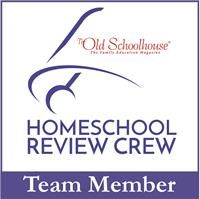
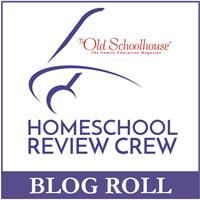














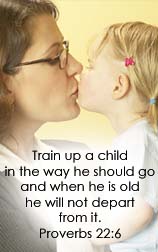



![[PREMIO2009.png]](https://blogger.googleusercontent.com/img/b/R29vZ2xl/AVvXsEjXD_Gx-wZ9EM5hXKrEYLksEBkYfRQtmb8VDVTDG_yyLggQoFIstZsh4zszdG20KqErZicRzEhiNYLty7j3IMXJYsABqkXjr8pp-ncj71xCbpxlXGbGpZq2fTuDQqq1RMKV4DPcDBnBViA/s1600/PREMIO2009.png)
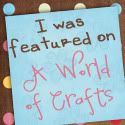
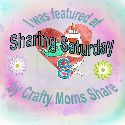


Wow, that's long! LOL! We had a blast with Greece & Rome and Greek Myths. :)
ReplyDelete